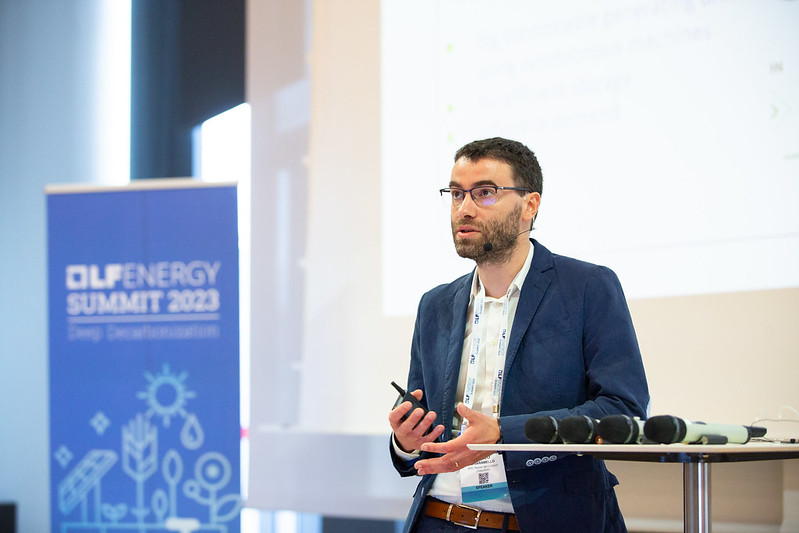LF Energy Summit 2023 Recap: Revolutionizing Power System Simulation with Dynaωo: An Open Source Breakthrough
At LF Energy Summit 2023, Marco Chiaramello from RTE took the stage to present the Dynaωo project (video follows below). This open source suite of simulation tools is set to revolutionize the way we model and simulate power systems, adapting to the challenges posed by renewable energy integration, interconnections, and power electronics.
A Rich History of Internal Tools
RTE, a major player in energy transmission, has a tradition of developing its own power system tools, which have been crafted in-house to ensure a deep understanding of power system phenomena. These tools allowed RTE to master the intricate details of power system operations and were key components in ensuring safe and reliable energy delivery.
The Winds of Change
However, the energy landscape has transformed dramatically. Renewable energy sources, interconnections with neighboring grids, and the rise of power electronics have introduced new complexities and challenges. Traditional tools, while effective in their time, struggled to cope with the dynamic interactions that emerged from this changing paradigm.
Introducing Dynaωo: The Paradigm Shift
To address this transformation head-on, Marco Chiaramello introduced Dynaωo, an open source simulation suite designed to tackle the new complexities of power systems. The core philosophy of Dynaωo revolves around collaboration, transparency, flexibility, and adaptability.
Key Principles of Dynaωo
– High-Level Language Modeling: Dynaωo promotes the use of high-level modeling languages like Modelica. This approach empowers users to describe the behavioral components of the power system using the same equations that govern the physical world. This method of modeling minimizes approximations and maximizes accuracy.
– Strict Separation Between Modeling and Solving: The suite emphasizes a clear separation between modeling and solving. Solvers are designed to be agnostic to the specific equations being solved, enhancing flexibility. This separation also preserves the integrity of modeling, preventing assumptions from polluting the model based on solver characteristics.
– Embracing the Open Source Philosophy: Dynaωo is not just about being open source; it’s a strategic choice to encourage collaboration. By open-sourcing tools, RTE invites a wide range of partners, including industries and universities, to contribute and enhance the solution.
Powerful Applications
Dynaωo’s capabilities shine in practical applications. For instance, in a simulation of the French-Spanish border, where multiple control mechanisms interacted dynamically, traditional static power flow simulations fell short. Dynaωo showcased its prowess by accurately capturing the intricate interplay of controls – discrete and continuous – resulting in a comprehensive understanding of the system’s behavior.
Looking Towards the Future
Dynaωo is a young project, but its potential impact is undeniable. RTE is committed to leveraging external open source communities and collaborating with other projects like the PowSyBl framework. The aim is to create a comprehensive ecosystem that empowers industries, academia, and researchers to model and simulate power systems with unprecedented precision.
